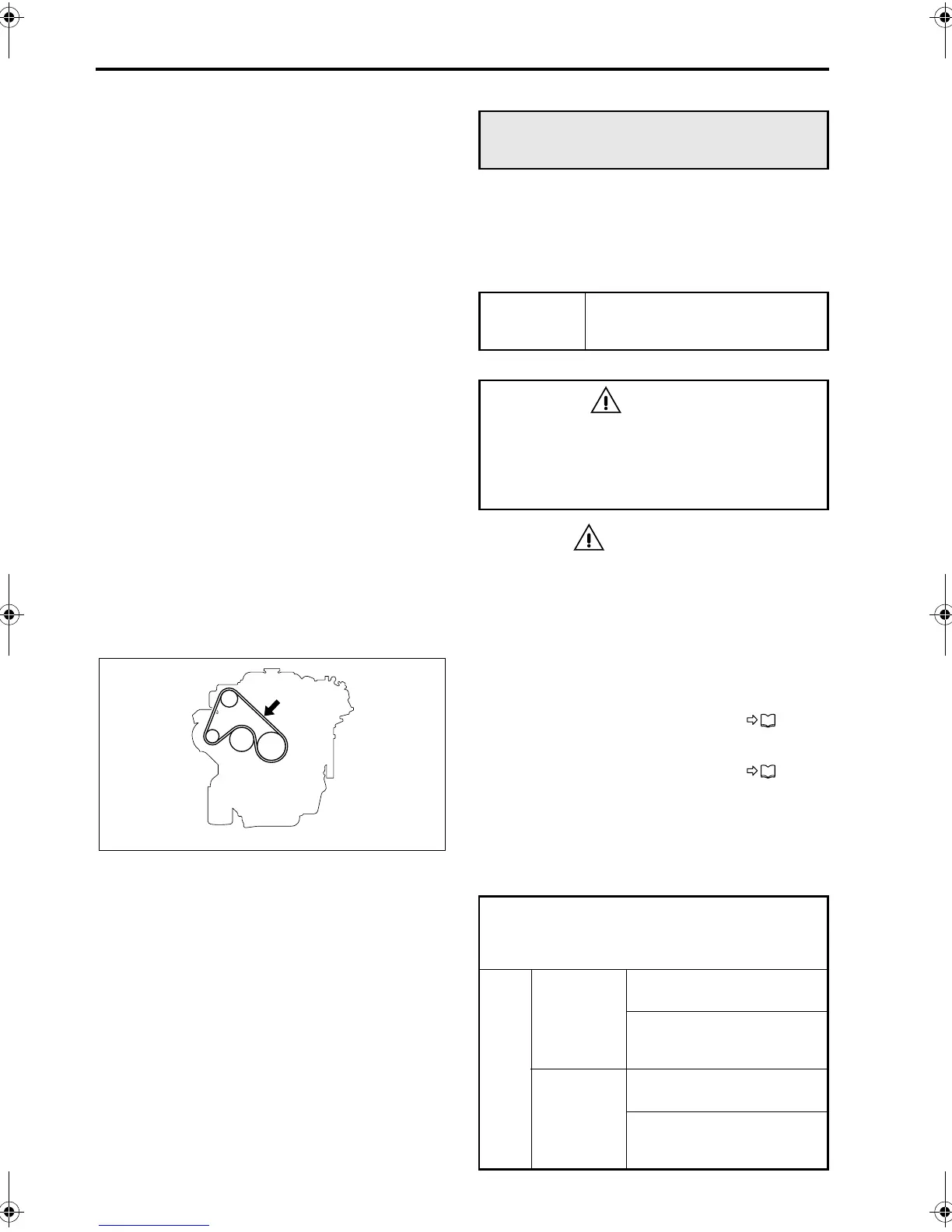12-46 Simple inspection and service
An excessively loose or tight belt could cause the
engine to overheat, the battery to be inadequately
charged, or the alternator or water pump to mal-
function. Always keep belts adjusted to the proper
tension.
CAUTION
Prevent the V-belt from any contact with oil or
grease during check and adjustment.
If soiled with oil or grease, the belts will slip and
this will shorten their service life.
1Check
1. Confirm that the parking brake lever is pulled.
Prevent the vehicle from moving by blocking the
wheels with chocks. Tilt the cab. P. 12-5
If the vehicle is a crew-cab model, uncover the
engine inspection opening under the assistant
driver’s seat. P. 12-4
2. Press the belt with an approximately 98 N (22
lbs., 10 kgf) force at the point midway between
the pulleys, and measure the amount of deflec-
tion.
3. If the deflection is not as specified below, the
tension of the belt must be adjusted.
V-belts – check and adjustment
V-belt
inspection
intervals
At the time of pre-operational
check and every 10,000 km
(6,000 miles) or every 12 months
WARNING
Always stop the engine before inspecting or
adjusting belts.
Ensure that the engine cannot be started
while you are performing checks or adjust-
ments.
Belt tension
[Amount of deflection when the belt is pressed
with a 98 N (22 lbs., 10 kgf) force at the point
midway between the pulleys]
Fan
belt
Vehicles
without air
conditioner
New belt (when installed):
9 to 11 mm (0.35 to 0.43 in.)
Used belt (when inspected
or reinstalled): 11 to 13 mm
(0.43 to 0.51 in.)
Vehicles
with air
conditioner
New belt (when installed):
7 to 9 mm (0.28 to 0.35 in.)
Used belt (when inspected
or reinstalled): 10 to 11 mm
(0.39 to 0.43 in.)
Z11933
FEFG.book Page 46 Thursday, March 10, 2005 7:30 PM

